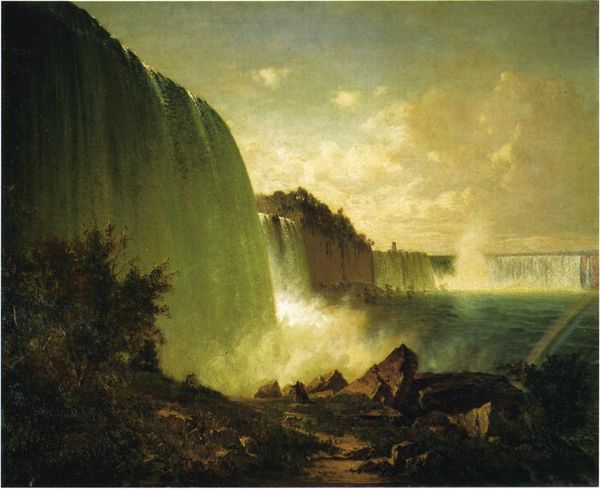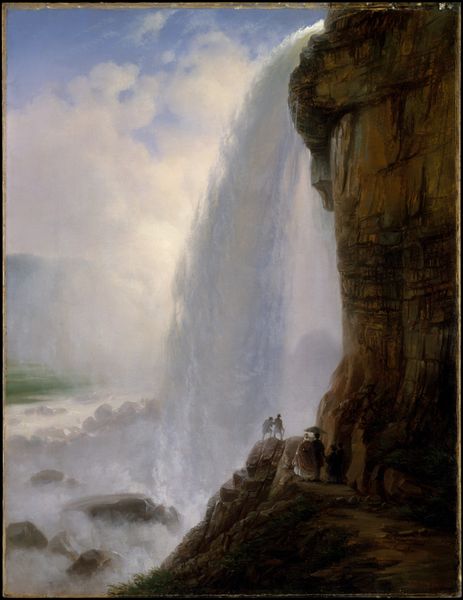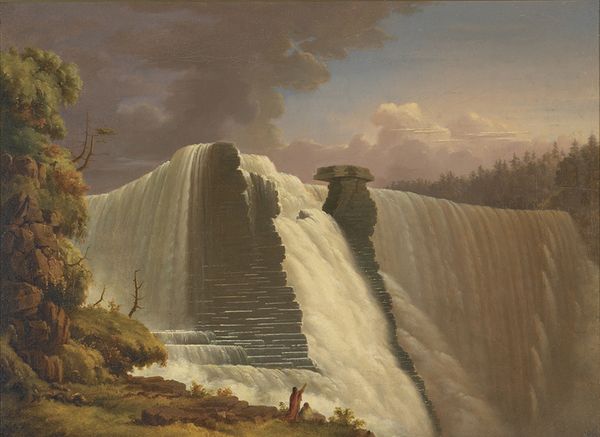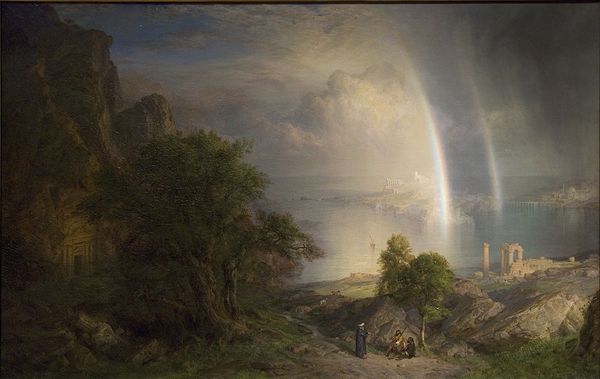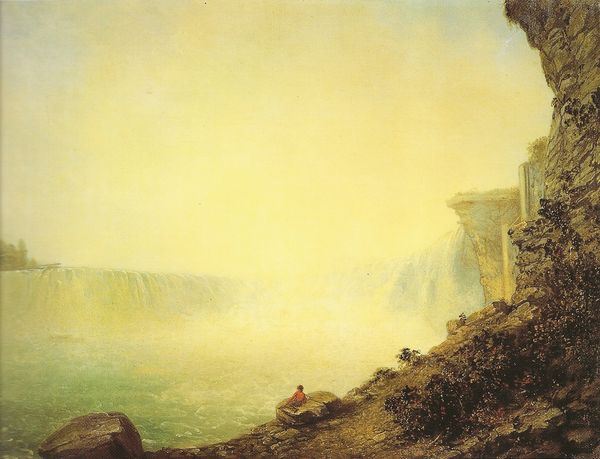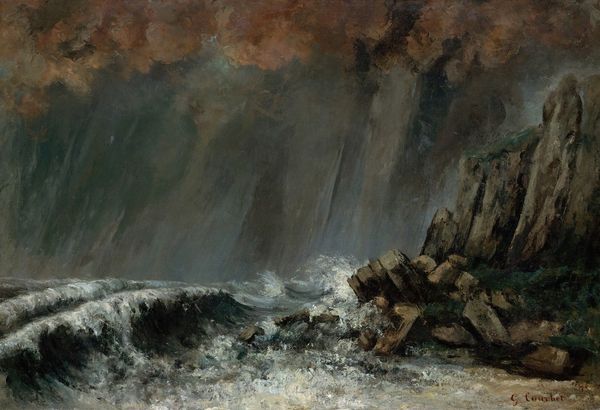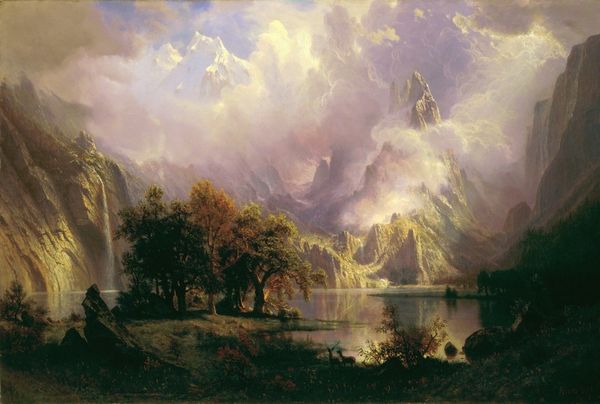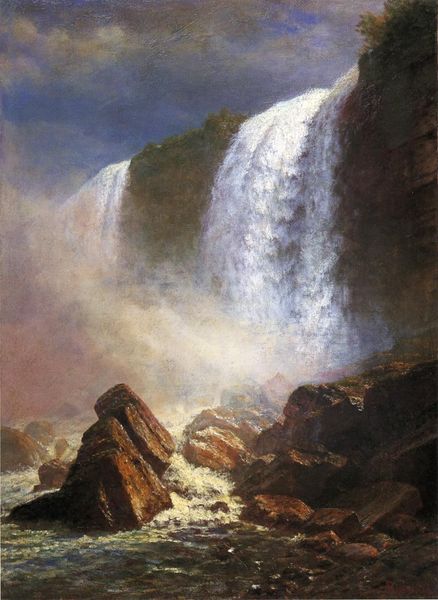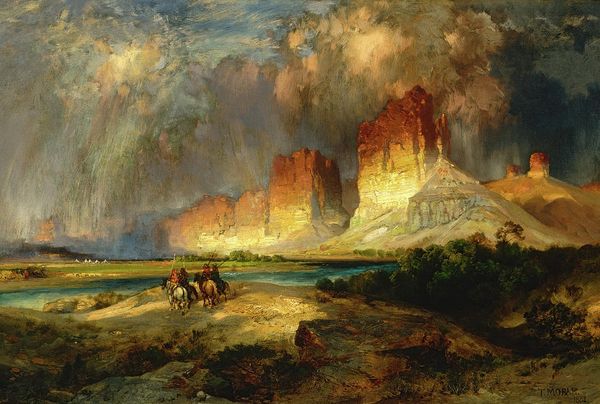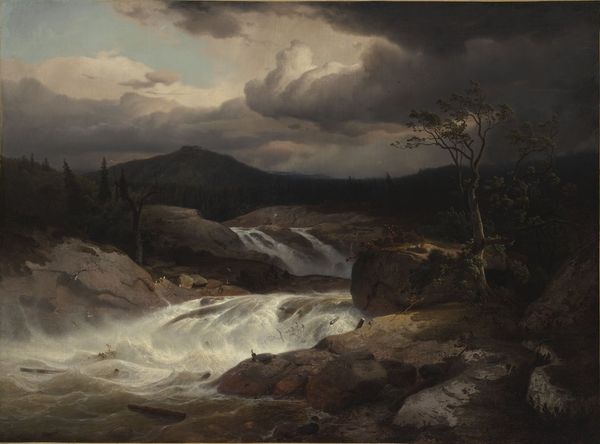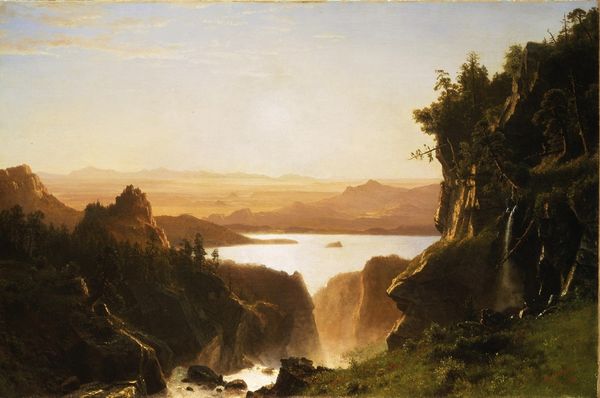
Copyright: Public domain
Curator: Standing before us is Jasper Francis Cropsey's "Niagara Falls from the Foot of Goat Island," painted in 1857. He rendered it with oil on canvas, offering a dynamic panorama. Editor: It’s quite a dramatic scene. The churning water feels powerful and a little overwhelming; the rainbows soften the force of nature, but only slightly. There's definitely a feeling of sublime beauty tempered by a sense of nature's untamed power. Curator: It’s true, Cropsey positions Niagara Falls as a representation of the American sublime. His training, typical of the Hudson River School, emphasized close observation coupled with Romantic ideals about nature’s grandeur. Tourism was on the rise then; this piece becomes part of a complex engagement between artistic representation and popular consumption. Editor: Exactly. And in that regard, the landscape is fraught. There is, undeniably, something distinctly *American* about the glorification of raw, supposedly untouched landscapes during this period of intense territorial expansion and indigenous displacement. Who is this painting for, really? What ideological role does it serve? Curator: It’s impossible to ignore those historical and socio-political currents. On one hand, paintings like this encouraged environmental awareness. Yet on the other, it visually reinforced the rhetoric of manifest destiny and a particularly narrow understanding of what land ownership entails. Editor: Even the positioning seems pointed—looking *at* Niagara, the civilizing landmarks in the far left are tiny, while the waterfall itself looms large and majestic. It's hard not to see a reinforcement of American exceptionalism, framing control and authority through sheer physical domination. Curator: That push and pull between aesthetic wonder and underlying power dynamics seems intrinsic to much of the era’s landscape painting. And the inclusion of Goat Island highlights a particular, cultivated vantage point; this wasn't simply wilderness; it was already shaped for specific viewing experiences. Editor: It does compel one to consider how our own perspective shifts meaning. Seeing Cropsey’s technical skill married to such culturally loaded content, it's vital to understand that "Niagara Falls from the Foot of Goat Island” invites celebration, but it must prompt us to question the narrative being so vividly, beautifully crafted. Curator: Yes, reflecting on who held the privilege of experiencing, portraying, and consuming these images offers deeper insights, beyond pure aesthetic enjoyment. Editor: Right, thinking critically about context makes it even more compelling today.
Comments
No comments
Be the first to comment and join the conversation on the ultimate creative platform.
